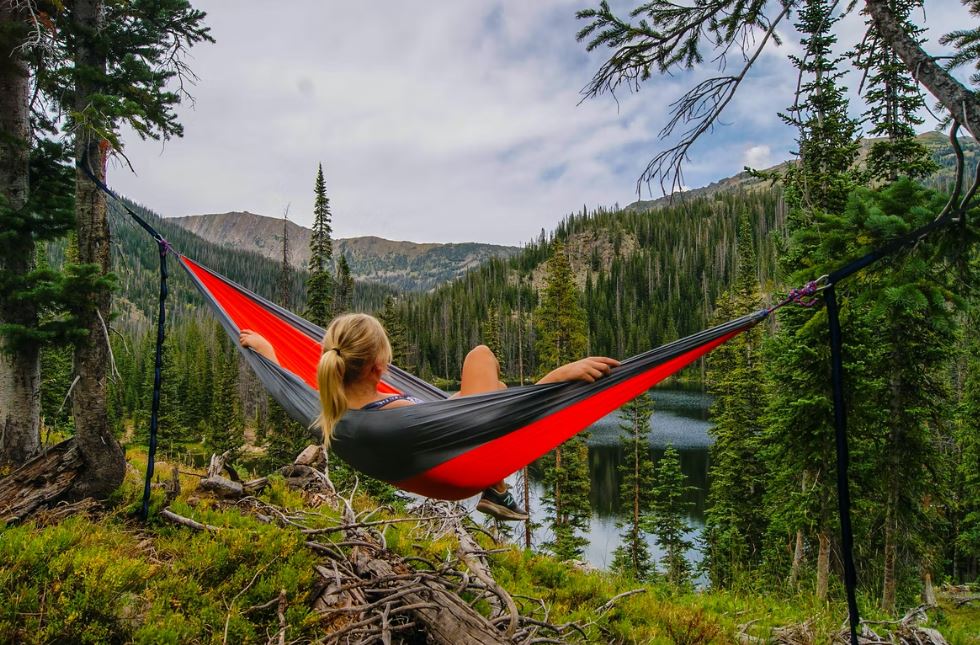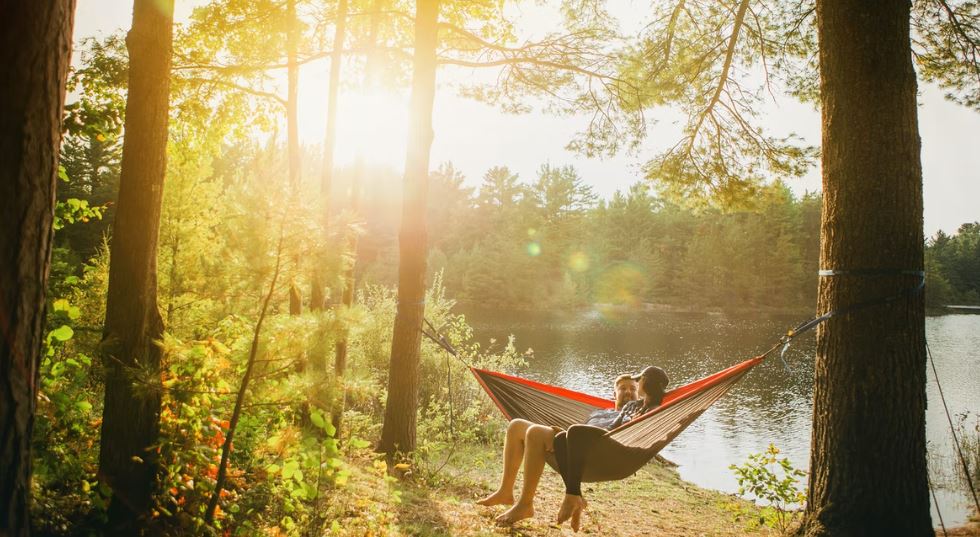A hammock is a fabric made of natural fibers or synthetic materials. It can be hung between two trees and used to make a sleeping bag. Hammocks are the best way to unwind in nature without bothering others. They’re also great for camping, other outdoor activities, and even your trip to the top beaches close to San Antonio.
Hanging your hammock in the proper location and manner is a personal and practical decision that can mean the difference between relaxing and not relaxing. You are not limited to hanging your hammock only outside; you can also get creative and find new places to hang your hammock indoors. There are also a lot of tips and tricks for enjoying the hammock. Whether you use straps, wall hooks, a hammock stand, or a combination of methods to hang your hammock between two trees in your favorite shady lawn spot, between rafters, on a porch, or even in your bedroom.
Selecting the Best Hammock
How do you know which hammock is best for you?
1. Cotton Hammock
Cotton is soft and cozy, making it an excellent choice for nappers.
2. Polyester Hammock
Polyester is long-lasting, making it ideal for long-term use.
3. Olefin Hammock
Olefin is a synthetic fiber that is used for many household items and is designed to withstand harsh outdoor conditions.
How To Hammock Camp
1. Choose the best location for your hammock.
Consider Leave No Trace principles such as setting up far away from a water source and using an established site with no vegetation to harm. Also, look under and around the hammock for anything that could hurt you if you fall out.
2. Choose the appropriate trees and use wide straps.
It denotes a healthy, robust, or thick trunk that is not home to any creatures that you might disturb.
3. Choose the best strap angle and height for your hammock.
The ideal angle between the strap and the ground is about 30 degrees, and the bottom of your hammock should be about 18 inches off the ground.
Where Can You Hang Your Hammock?
1. Check with local land managers to ensure that hammocks are permitted in the area.
Not everywhere allows you to hang one. As hammocks become more popular, and more of us hang them responsibly, fewer parks will be inclined to prohibit them.
2. Set up your hammock at least 200 feet away from any source of water.
As appealing as it may be to post a photo of your hammock swaying over a beautiful lake or spanning a stream, shoreline and riparian habitats are fragile and are frequently harmed by people who disregard this rule.
3. Examine a potential pair of hammocking trees carefully when you find them.
Examine the area for sensitive plant life and wildlife habitat, as well as potential hazards like insect nests and poisonous plants. Also, look for established sites with little or no vegetation that could be trampled.
4. Never place a hammock across a path that humans or animals may use.
It may pose a risk to both parties. Even if you don’t see a well-worn path, look around to see if there’s a logical route down to a stream or lake. Taking down your hammock when you leave for the day is also a good practice to ensure that no roaming animals or small children become entangled while you are gone.
5. Do not hang your hammock from unhealthy or dead branches of trees.
If the tree you choose or one of its limbs falls, you could injure yourself and harm the ecosystem. Look for sturdy trees, with a diameter of at least six inches.
6. Use Tree Saver straps at all times.
A rope or cord can dig in and damage underlying layers that are critical to the survival of a tree, so use these wide (0.75″ or more) nylon/polyester webbing straps that protect against bark abrasion. Never use anything thin and brittle, such as a plastic zip cord or wire, and never hammer or screw anything into a tree.
7. Never attach more than one hammock to a tree to reduce tree stress.
Set up several hammocks, with each person using a different tree. You will lessen the strain on individual trees while spreading the impact across your group.
8. Car and Trucks
Pitching your hammock from your car or truck’s roof rack may be a better option for car camping. Of course, this is only possible if your car is nearby and there is a nearby boulder, tree, or structure to act as a secondary anchor point. If you want to try this method, you’ll need a vehicle with a roof rack and some tree straps. Tie the straps to the part of the roof rack that connects to the roof of your car to reduce the overall load on your vehicle. Then, to complete your camping setup for the night, attach one end of your hammock to your roof rack and the other to a secondary anchor point.
9. Build a Hammock Structure
For more permanent hammocking systems at home, consider building a permanent hammocking structure. This could be as simple as a homemade stand or as complex as a fully functional weatherproof snoozing area. Because there are so many different ways to make a hammocking structure, you can fine-tune your design to meet your space constraints and budget. If you need some structure inspiration, check out this video of a DIY hammocking pergola: the concept behind most of these hammocking structures is very similar to creating hammocking anchors with posts. Creating a full-fledged structure, on the other hand, allows you to advance your design.
How to Hang Your Hammock at the Most Appropriate Angle and Height
1. A 30-degree strap angle between the strap and the ground is ideal.
It’s tempting to pull the hammock taut to create a flatter sleeping platform, but this causes tension in the sides, which can feel constricting.
2. Hang your hammock no higher than 18″ off the ground.
When the hammock’s lowest point is at that height, getting in and out is relatively simple, and falling out is unlikely to result in serious injury.
3. Sleep at a slight angle.
It’s not exactly a setup tip, but it solves the problem of your back bowing uncomfortably. Simply angle your body away from the centerline by 10-15 degrees after crawling in, and your body will lie more horizontally.



